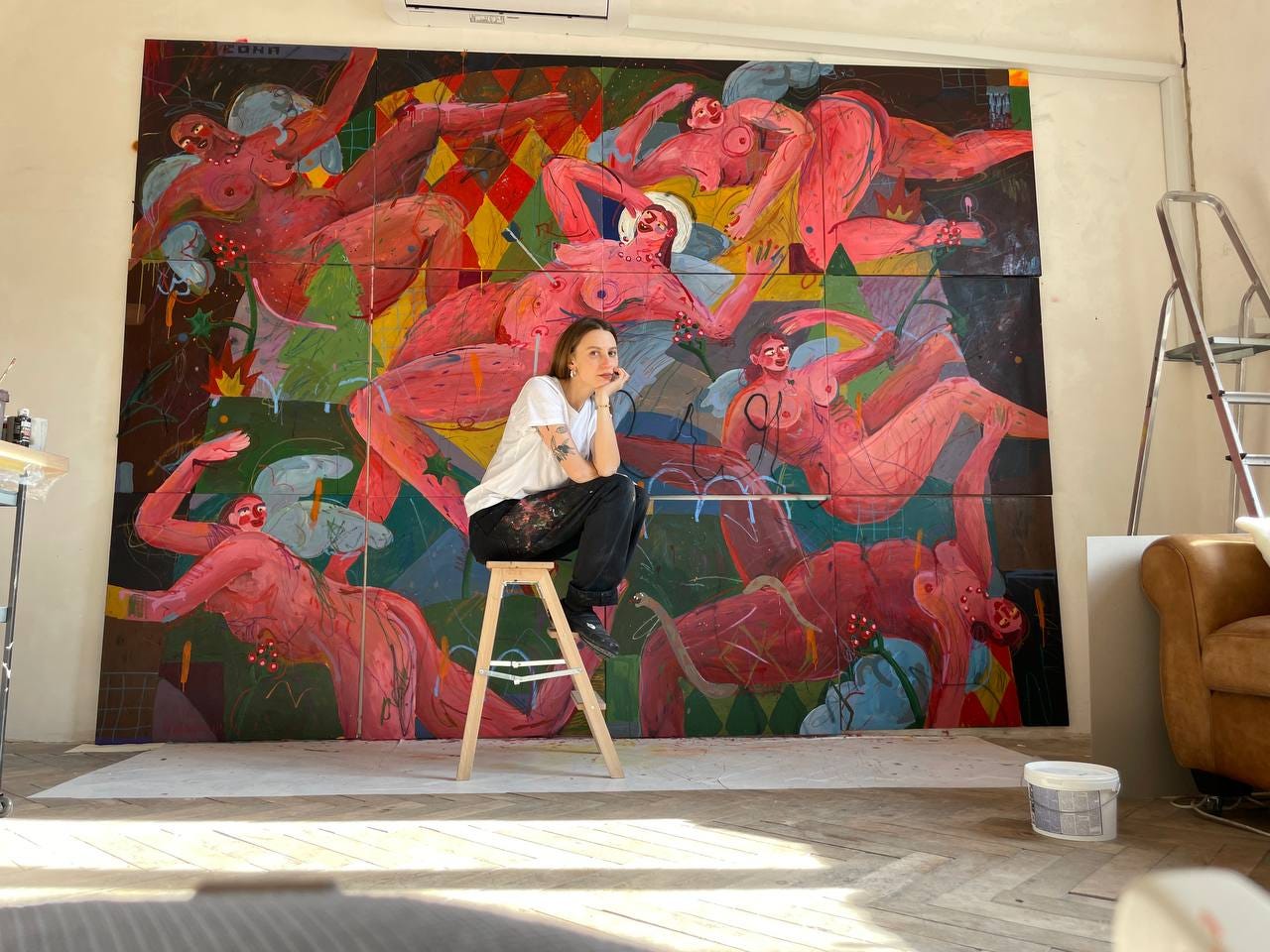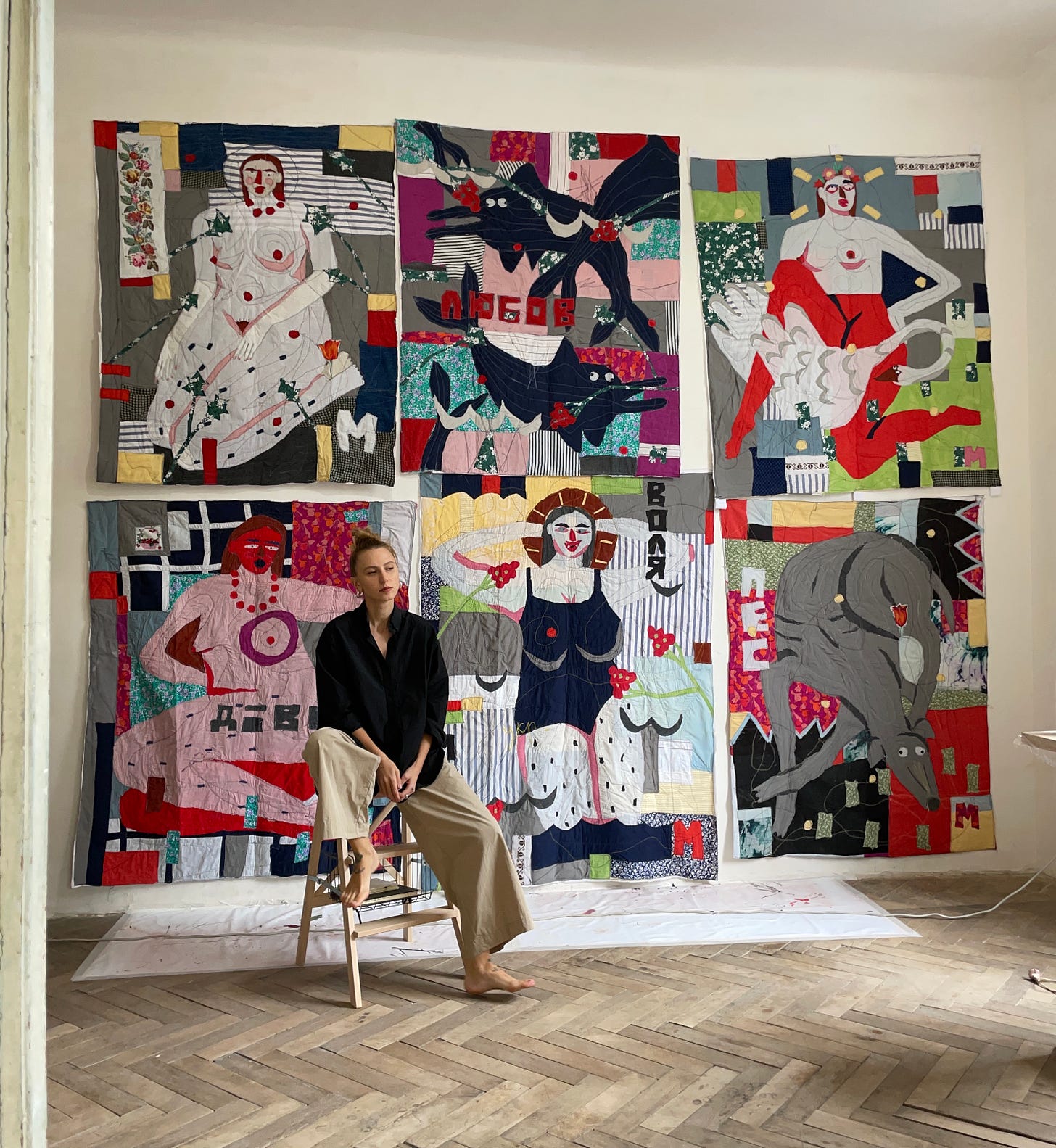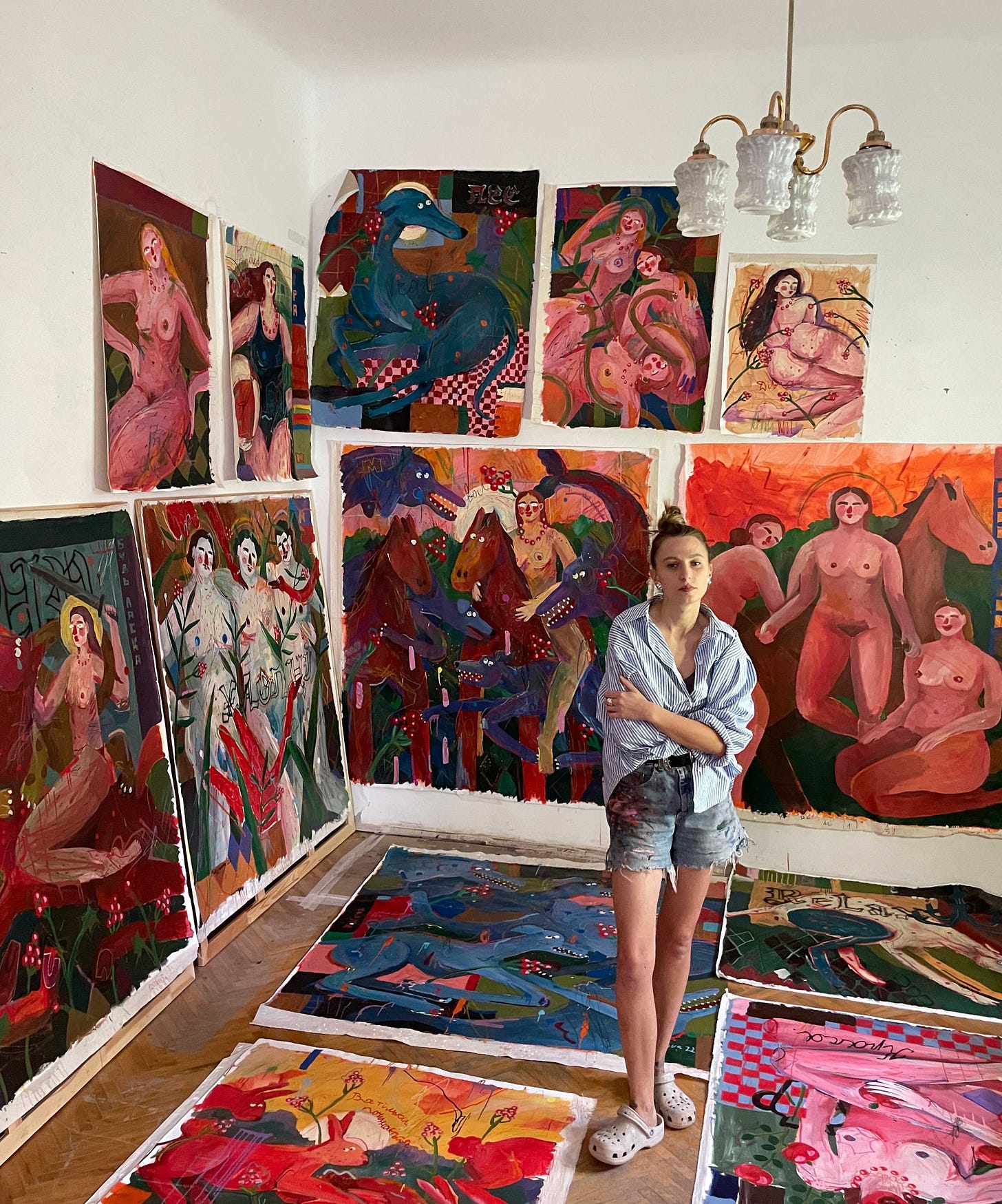Ss2 — CLOISTRAL with Iryna Maksymova
The Ukrainian artist contrasting the hyper-masculine imagery of the war with harmonious female figures
Throughout January, Studio Sessions explores the balancing act between isolation and community with a series entitled CLOISTRAL
WORDS BY CARLOS IBANEZ
ART BY IRYNA MAKSYMOVA
Iryna Maksymova intended to invest her creative mind in music, but instead, her journey drifted towards expressing herself in paintings. She developed this passion during the COVID-19 pandemic, as the sudden disruption of routine presented the unanticipated opportunity to dive deep into her practice. Maksymova’s first exhibit was in her hometown Lviv in western Ukraine, where she continues to reside despite the increasingly westward threat of Russian forces.
In contrast to the images of strife and war that Ukraine has become synonymous with, Maksymova’s work expresses a Ukrainian cultural identity furnished with vibrant, intricate patterns and colours. Informed by symbolism and motifs borrowed from Ukrainian folklore and mythology, her range of subjects includes animals and invigoratingly vegetal landscapes that idealise a symbiotic relationship between nature and humans. However, it is the overtly feminist bent of her nude female figures that has garnered the most attention. These figures, figurative in their features and often gargantuan in proportions, communicate an unencumbered and deeply communal femininity.
The characters in a Maksymova painting exist in a world that is in a state of both harmonious order and cloistral organic disarray. Their feminist ethos seemingly emanates from an unmistakably androgynous quality in her female figures. More than evading the male gaze, she splashes a bit of paint in its eye, and opts to depict her femme figures as abstractions of real women. Our tendency is to read into her work — indeed into the work of any contemporary Ukrainian artist — some compelling commentary on the war. At first glance we seem to struggle with finding that in these paintings, but a second glance reveals Maksymova’s view on the matter, namely in what’s missing: the world of men with guns and their high-stakes performance of masculinity.
Keep reading with a 7-day free trial
Subscribe to VISUAL ARTS to keep reading this post and get 7 days of free access to the full post archives.








